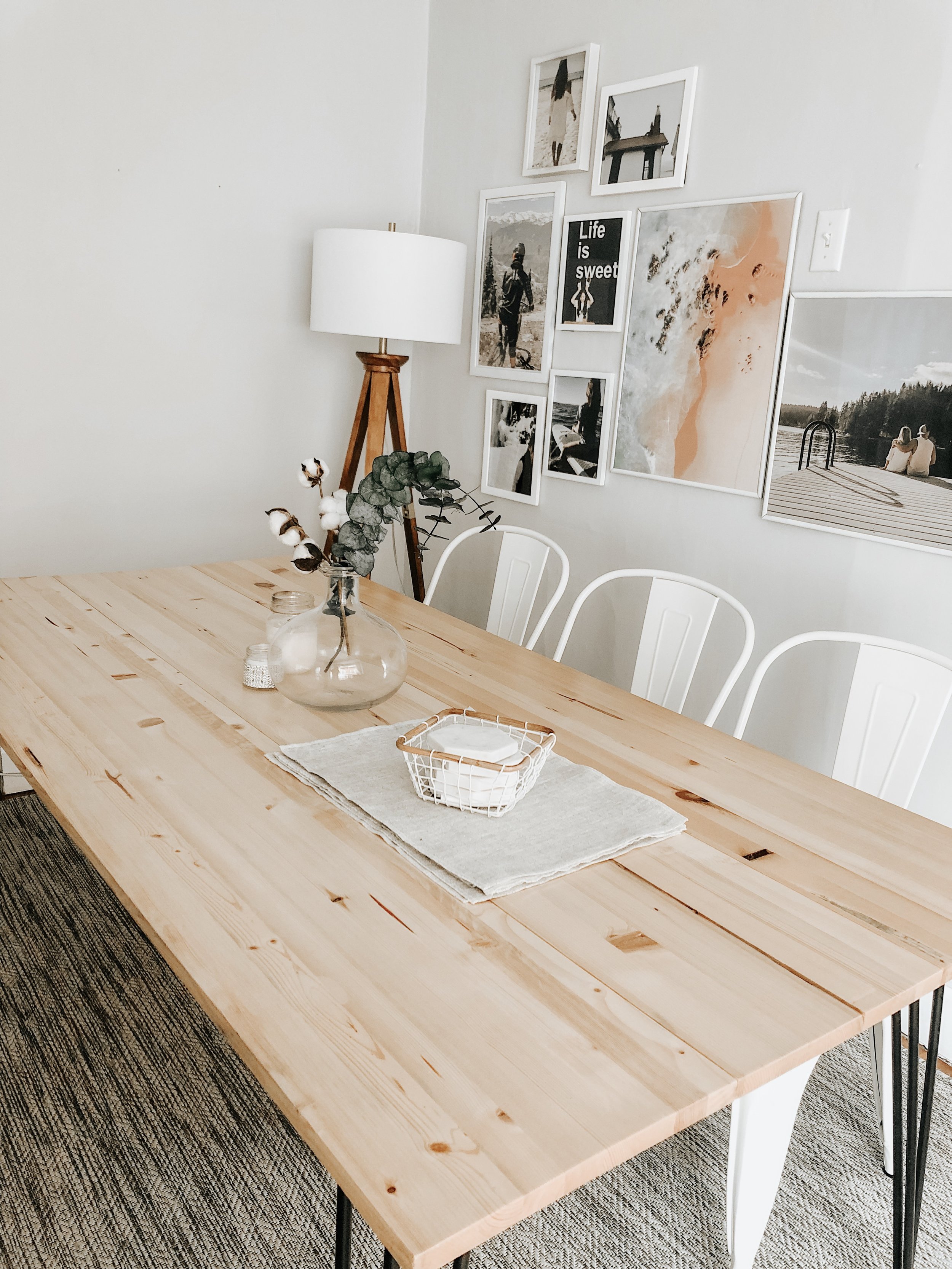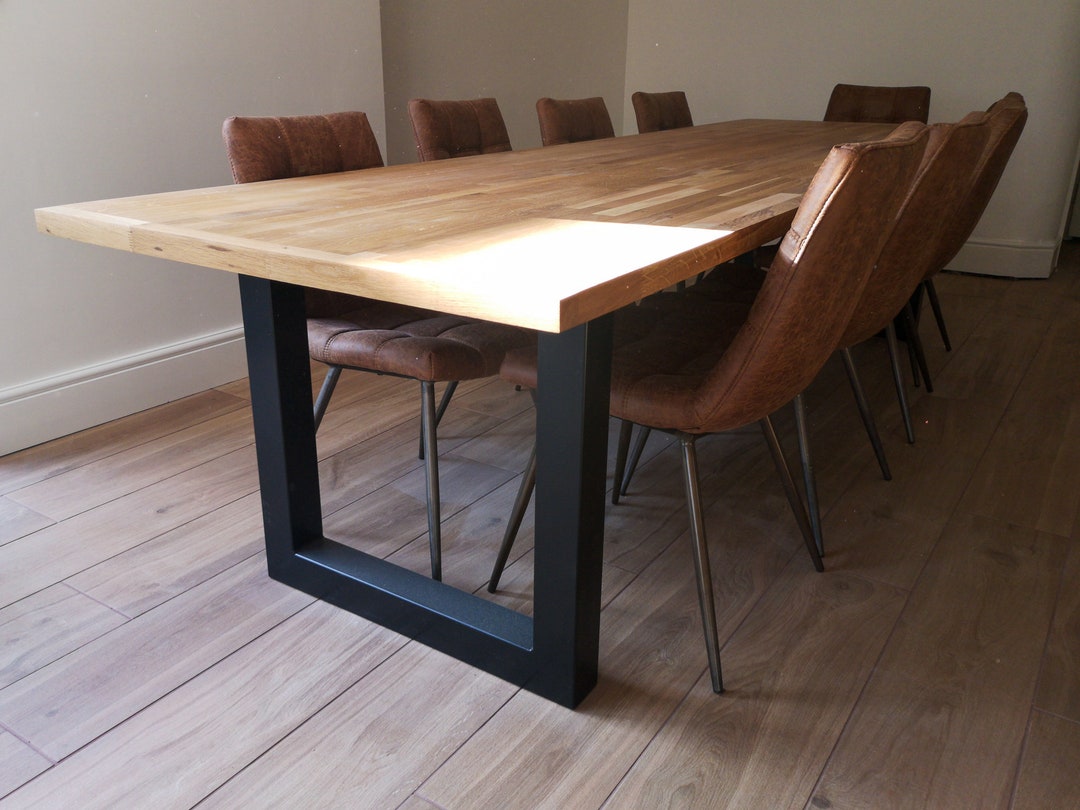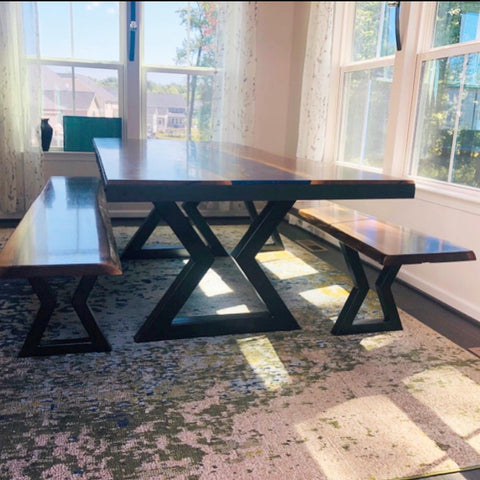Exactly How to Select the Perfect Eating Area Table Legs for Your Home Design
Picking the suitable dining room table legs is a nuanced procedure that needs cautious consideration of various elements, including your room restraints, visual preferences, and useful needs. The interaction in between materials, dimensions, and styles can considerably influence the atmosphere of your eating location, making it important to approach this choice carefully.
Assess Your Eating Space
Analyzing your eating room is vital for choosing the right table legs that match both appearances and functionality. Begin by determining the dimensions of your dining area, including ceiling height, flooring space, and closeness to other furniture. This details will aid identify the appropriate dimension and height of your eating table, which directly affects the choice of table legs.
Next, take into consideration the style and design of your eating space. As an example, an open-concept layout may take advantage of table legs that supply visual lightness, such as slim steel or acrylic options. Conversely, a much more typical setting might require tough wooden legs that offer a feeling of durability.
Evaluate the existing color combination and products in your eating location. Integrating the table legs with these elements creates a cohesive look that improves the total style. Additionally, think regarding the performance called for in your room. As an example, if you regularly host large gatherings, consider legs that offer additional assistance and security.
Inevitably, an extensive evaluation of your dining space will certainly lead you in making an educated choice, making sure that your table legs not only enhance the visual allure yet likewise serve practical objectives.
Consider Your Design Preferences
When picking eating space table legs, it is vital to assess your personal design preferences, as they considerably influence the total aesthetic of your dining room. Your option of table legs can either complement or comparison with existing decor, making it vital to align them with your recommended indoor design motif.
If your home leans in the direction of a contemporary visual, think about sleek steel or minimalist wood legs that supply a clean, minimalist look. For an extra typical method, ornate wood legs with intricate makings can add a touch of style and class. Industrial designs take advantage of robust, raw products such as reclaimed timber and steel combinations, mirroring a tough beauty.
Furthermore, farmhouse and rustic designs commonly favor strong, chunky legs that evoke a feeling of warmth and convenience. Conversely, if your design is diverse, you might pick unconventional forms or a mix of products to create aesthetic interest.

Evaluate Product Options
The choice of material for dining space table legs plays a crucial duty in both toughness and visual allure. Common materials include wood, metal, and composite options, each offering unique attributes that can affect the total appearance and long life of your table.
Timber is a timeless selection, known for its warmth and versatility. Hardwoods like oak and walnut provide extraordinary stamina and can be completed in different spots to match any type of design. Softwoods like ache are extra susceptible to scratches and damages, making them much less suitable for high-traffic locations.
Metal legs, frequently crafted from steel or aluminum, exude modernity and commercial beauty. They are immune and extremely long lasting to wear, making them suitable for family members with youngsters or regular gatherings (dining room table legs). Additionally, steel can be completed in various shades, improving the customization opportunities
Composite products, such as MDF or laminate, offer price and varied designs. While typically much less Check This Out resilient than strong timber or metal, they can still give an elegant appearance and are usually simple to maintain.
Inevitably, the material you pick ought to align with your way of life, aesthetic choices, and the level of usage your dining table will certainly experience.
Determine Height and Dimension
Choosing the ideal elevation and Your Domain Name size for your dining-room table is necessary for both functionality and convenience. The conventional height for eating tables usually ranges from 28 to 30 inches, allowing ample legroom for the majority of people when seated. However, it is essential to consider the measurements of your eating area and the kinds of chairs you plan to utilize.

In addition, consider the proportions of your dining room. A larger table in a roomy area can produce a grand atmosphere, while a smaller table works well in more intimate settings. Eventually, the best height and size will harmonize with your overall design and improve the dining experience for you and your guests.
Explore Customization Possibilities

In addition, the style of the legs can be customized to fit numerous designs, such as rustic, modern, or commercial. Conical legs can evoke a mid-century modern-day feeling, while beefy, block-style legs may resonate with standard or farmhouse design.
Homeowners can likewise explore shade finishes, from all-natural wood discolorations to paint, allowing them to match or contrast with the table top and bordering design.
Moreover, leg elevation can be adjusted to fit specific seating plans or individual choices, enhancing both comfort and capability.
Finally, unique embellishments, such as carvings or ornamental brackets, can even more customize the table legs, making the dining experience not just a meal but a statement piece in the home. By thinking about these personalization alternatives, property owners can create an eating room table that genuinely mirrors their individuality.
Final Thought
Picking the perfect eating area table legs calls for careful consideration of different variables, including the dimensions of the dining area, design choices, material sturdiness, and wanted elevation. Customization options even more improve the capacity to attain a natural visual that complements the overall design. By systematically examining these aspects, home owners can make certain that the chosen table legs not just fulfill functional requirements but also contribute positively to the dining experience and atmosphere of the home.
Choosing the suitable eating space table legs is a nuanced procedure that needs cautious consideration of various elements, including your space constraints, visual preferences, and practical needs.Analyzing your eating room is vital for picking the right table legs that match both appearances and capability.When establishing dimension, determine the area where the table will certainly be positioned to guarantee it fits conveniently, allowing for at least 36 inches of clearance around the table for very easy motion. A larger table in a spacious location can produce a grand atmosphere, while a smaller table functions well in more intimate settings.Picking the suitable dining room table legs calls for cautious consideration of numerous aspects, including the measurements of the dining space, design preferences, product toughness, and preferred elevation.